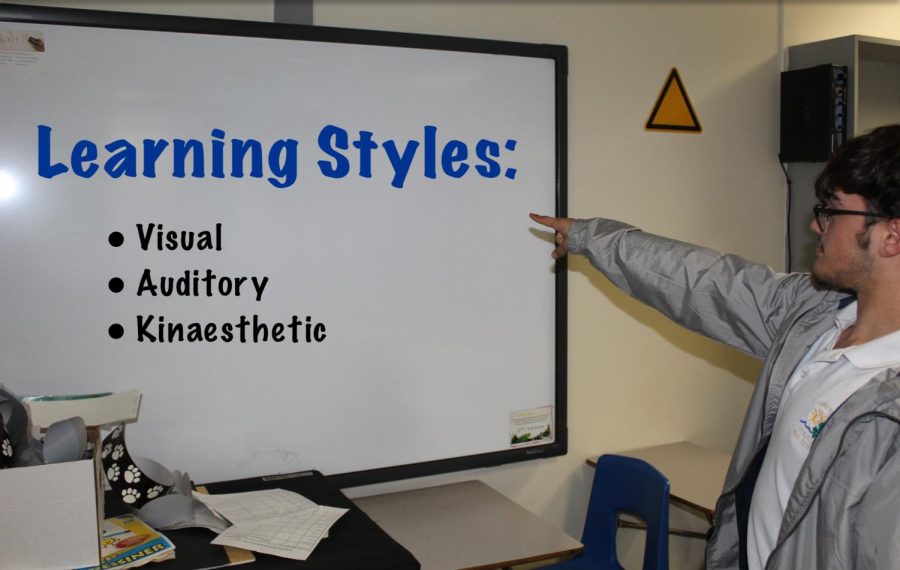Where’s the Variety in Teachers’ Lessons?
February 17, 2023
Dozens of eager eyes gaze towards the front of the classroom, each trying their best to absorb every inch of writing that envelops the board. One pair of these eyes, however, is completely lost. An eyebrow furrows, and the learning atmosphere succumbs to a state of confusion for a student longing for their teacher to enforce different teaching styles in their lessons. Every student is an individual, an individual who learns, studies and grows differently than the student beside them… or beside them… or beside them. It’s time for teachers to acknowledge this.
Studies show that of three common learning styles, 65% of students are visual learners, 30% are auditory and 5% are kinesthetic (read more), and while this may prompt teachers to abide with teaching strictly visually and audibly, what about the 5% who are waiting, pining, to learn? Shouldn’t they have the same opportunity as the majority? This minority of students may consist of those with ADD or dyslexia for example, who possess the same academic potential as their peers, but may simply need a variation of instruction to get them on the right track– which could be the inclusion of their learning styles in the classroom.
Mrs. Carrasco is an AICE Marine Science teacher at Pines Charter and a strong enforcer of utilizing various teaching methods to appeal to and include each and every one of her students in the lessons she teaches. She finds that “students do better when they take the tests because the strategies accommodate them in different ways that help them understand the concepts in different perspectives.”
Oftentimes, teachers become comfortable with building a routine in the classroom, and stick with it: Lecture. Work. Test. Repeat. The redundancy in this itself is why schools lack the ability to keep students engaged. It is crucial to switch things up with the addition of hands-on activities, reviews and reinforcements, and interactive learning, like Mrs. Carrasco implements in her classroom. With the intent of ensuring that no student is left in the dust, she “incorporate[s] various methods of teaching,” including “audio/visual with the videos, foldables for the artistic ones, vocabulary with pictures, questions and answers, articles, power points, labs, group work” and so much more that her students are quite familiar with.
Her methods have proved their success, with 96% of her students passing the AICE exam for her course last year.
Perhaps a teacher stays loyal to lecturing a new topic every day, without weaving it in with anything new and different, then expects A’s to flow into the grade book. It’s easy to lose a student to a daydream, when all they are doing in class is robotically writing down notes, rather than truly comprehending the collection of words on their paper. But to another student, notes can be their lifesaver for a test, while individual work has them wondering where to even begin. While for someone else, it’s easier to learn on their own, and so on. Thus, rotating a variety of teaching styles can give every student who learns uniquely a chance to not only absorb information, but to truly learn it, understand it, and thrive.
Some students are visual learners, some learn from independent practice, some prefer a combination of all of the above. If a teacher employs a different teaching method every day of the week, what might not click for one student one day, may click the next. Every student, regardless of their learning style, deserves to make their 180 days of school count academically.







